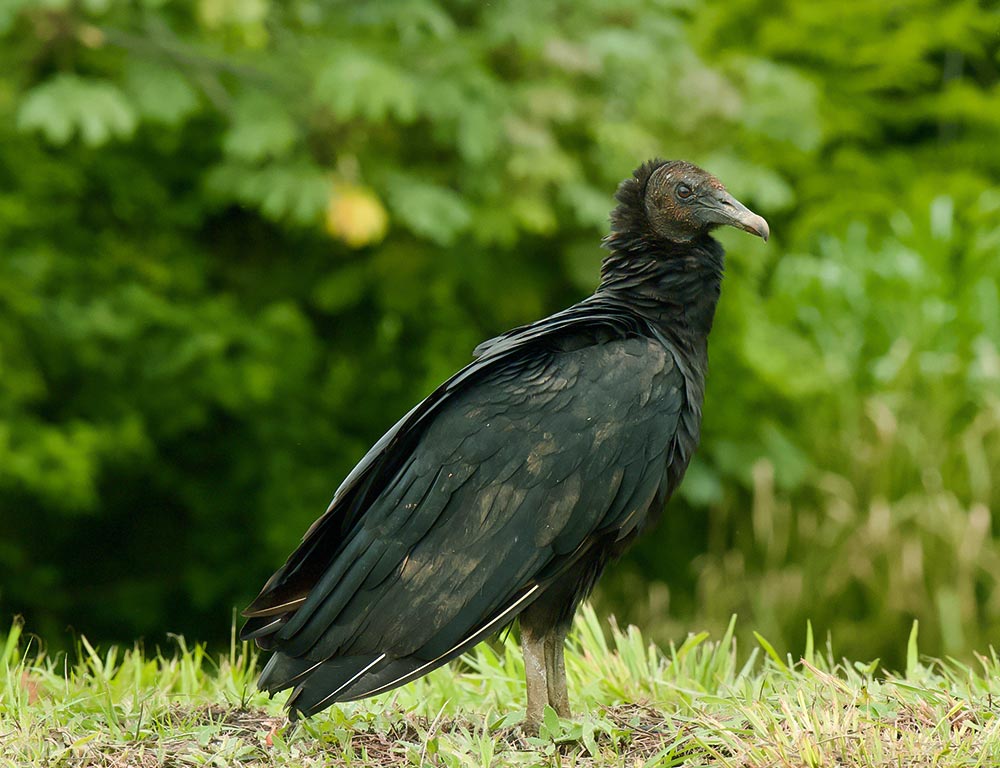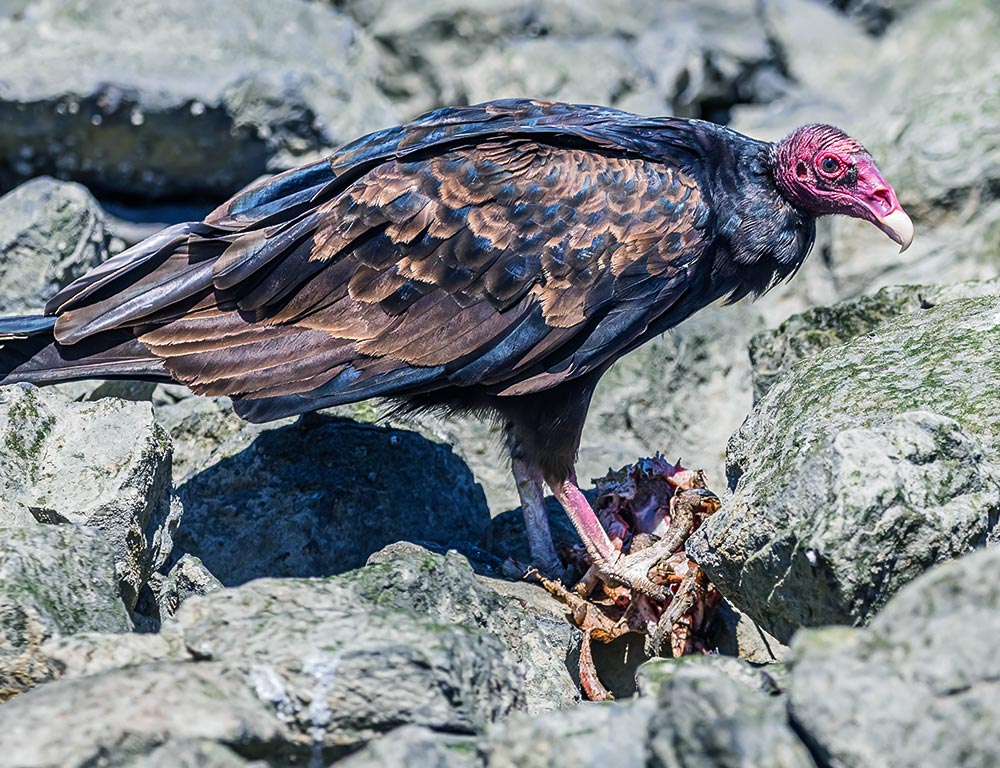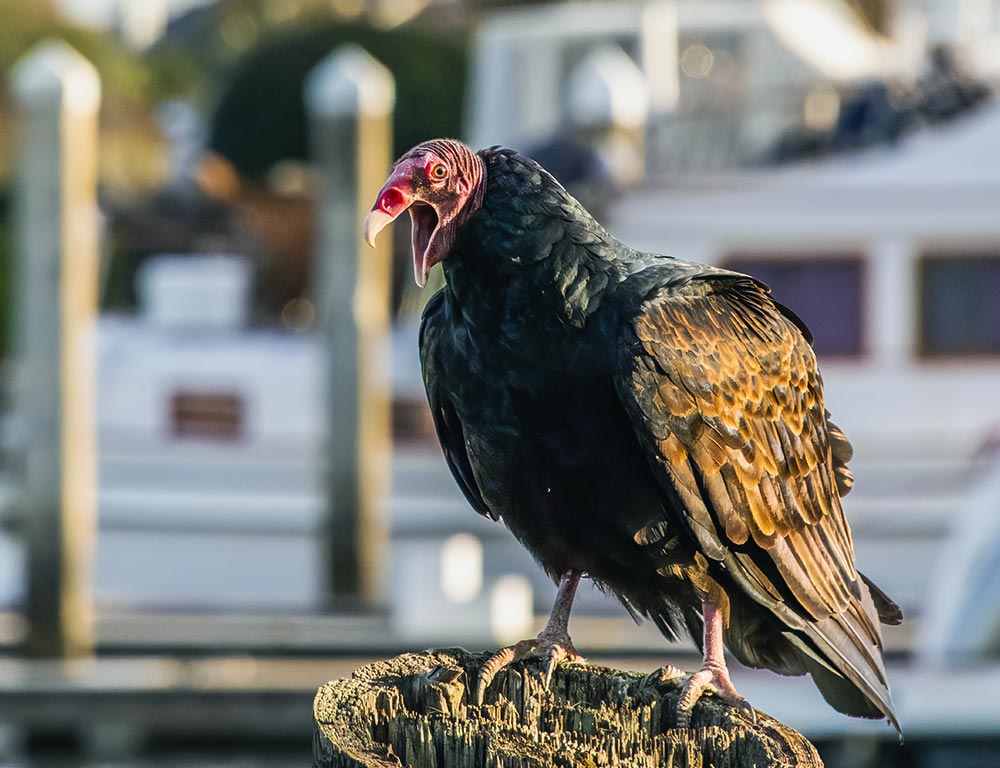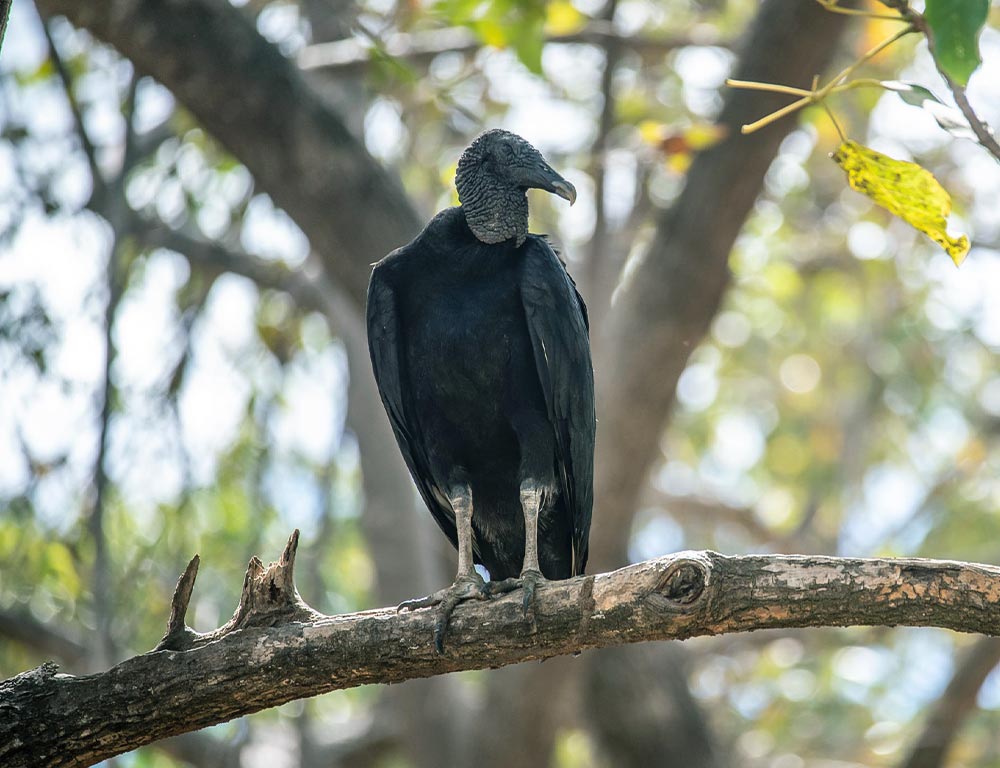Vultures in Virginia play a crucial role in the state’s ecosystem, serving as nature’s clean-up crew.
These majestic birds, primarily the Turkey Vulture and the Black Vulture, are vital scavengers that help maintain ecological balance by efficiently disposing of carrion.
Their distinct soaring flight patterns make vultures common in Virginia’s skies, yet their essential role is often overlooked.
While some may find their appearance intimidating, these birds provide invaluable services by preventing the spread of diseases and recycling nutrients.
This introduction aims to shed light on the significance of vultures in Virginia, highlighting their ecological contributions and emphasizing the need for conservation efforts to ensure the health and sustainability of the state’s diverse ecosystems.
Common Criteria of Vultures in Virginia

In Virginia, the Turkey Vulture (Cathartes aura) and the Black Vulture (Coragyps atratus) are two prominent species that contribute significantly to the state’s ecosystem.
Often misunderstood and underappreciated, these vultures are crucial as nature’s clean-up crew. The common criteria these avian scavengers share in Virginia are essential to understanding their ecological significance.
Feeding Habits
Turkey Vultures and Black Vultures are carrion eaters, relying on scavenging as their primary sustenance.
Their highly specialized digestive systems allow them to consume decaying flesh without succumbing to harmful bacteria.
Flight Patterns
Vultures are renowned for their distinctive flight patterns, characterized by soaring and gliding on thermals.
This energy-efficient method enables them to cover large territories in search of carrion. Their keen eyesight aids in spotting potential food sources from great heights.
Role in Disease Control
Vultures provide an invaluable ecological service by consuming carcasses and preventing the spread of diseases.
Their stomach acids are highly corrosive, neutralizing dangerous pathogens and thereby acting as a natural sanitation mechanism.
Social Behavior
Vultures often exhibit communal roosting and feeding behaviours. Forming groups, or kettles, enhances their locating and consuming carrion efficiency. Additionally, these social interactions play a role in mating and raising offspring.
Habitat Preferences
While Turkey Vultures prefer open areas like fields and grasslands, Black Vultures are more adaptable, occupying both rural and urban environments.
Understanding their habitat preferences is crucial for conservation efforts and maintaining healthy vulture populations.
Conservation Challenges
Despite their ecological importance, vultures face various threats, including habitat loss, poisoning from ingesting lead ammunition in carcasses, and collisions with man-made structures.
Conservation initiatives are essential to safeguarding these vital scavengers and ensuring the resilience of Virginia’s ecosystems.
The common criteria of vultures in Virginia extend beyond their distinctive appearance and flight patterns.
Appreciating their feeding habits, ecological roles, and the challenges they face is fundamental to fostering coexistence and implementing effective conservation strategies.
Types of Vultures in Virginia
The Turkey Vulture (Cathartes aura) and the Black Vulture (Coragyps atratus) contribute to the state’s ecological balance in the skies above Virginia.
While sharing a role as carrion-eating scavengers, each species possesses unique characteristics that define its lifestyle and environmental impact.
1. Turkey Vulture

- Scientific Name: Cathartes aura
- Size: 25-32 inches
- Weight: 3-5 pounds
- Population: Stable
- Life Span: Up to 20 years
- Wingspan: 67-72 inches
- Status: Least Concern (IUCN)
With its red featherless head and dark plumage, the Turkey Vulture is an iconic avian resident of Virginia’s open landscapes. Thriving in diverse habitats, these vultures play a vital role in carrion disposal.
Their keen sense of smell allows them to detect the scent of decaying flesh from high altitudes. They exhibit social behaviours in communal roosts, engaging in aerial acrobatics and sharing communal warmth.
Despite their somewhat intimidating appearance, Turkey Vultures are essential contributors to disease control and environmental cleanliness.
2. Black Vulture

- Scientific Name: Coragyps atratus
- Size: 24-27 inches
- Weight: 4-5.5 pounds
- Population: Increasing
- Life Span: 10-15 years
- Wingspan: 54-60 inches
- Status: Least Concern (IUCN)
The Black Vulture, distinguished by its black plumage and short, square tail, is a highly adaptable species found across Virginia. Often seen in both urban and rural environments, these vultures exhibit opportunistic feeding habits.
Black Vultures lack the keen sense of smell found in Turkish vultures but compensate with exceptional eyesight. They are known for roosting sites on cliffs or trees, displaying social hierarchies within their colonies.
While contributing to carrion clean-up, Black Vultures face threats from lead poisoning and habitat degradation, making conservation efforts vital for their sustained presence in Virginia’s ecosystems.
Difference Between Two Types of Vultures in Virginia

In Virginia, the Turkey Vulture and the Black Vulture share the common role of scavengers, yet they exhibit distinct characteristics that set them apart regarding appearance, behaviour, and ecological impact.
Appearance
Turkey Vultures are easily recognizable with their red featherless heads, contrasting against dark plumage. Their wings are broad, and they display a V-shaped silhouette in flight.
Their size ranges from 25 to 32 inches, and they have a wingspan of 67 to 72 inches.
Black Vultures, on the other hand, have black plumage and a shorter, square-shaped tail. They are slightly smaller than Turkey Vultures, with a size ranging from 24 to 27 inches and a wingspan of 54 to 60 inches.
Feeding Behavior
Turkey Vultures rely on an exceptional sense of smell to locate carrion. They often soar high in the sky, scanning the ground for the scent of decaying flesh.
Their feeding behaviour is more solitary, and they are known for their ability to locate carrion in open landscapes. Black Vultures have a less developed sense of smell but compensate with keen eyesight.
They often gather in groups and are more opportunistic feeders, relying on visual cues to find carrion. Their adaptability allows them to thrive in both urban and rural environments.
Social Structure
Turkey Vulture: Turkey Vultures exhibit communal roosting and social behaviours. They engage in aerial displays and often share communal warmth in roosts.
Their social structure contributes to their efficiency in locating and consuming carrion. Black Vultures also display social behaviours but tend to form colonies on cliffs or in trees.
Within these colonies, a social hierarchy is established, and interactions play a crucial role in mating and raising offspring.
Conservation Status
Turkey Vultures are classified as “Least Concern” by the IUCN, indicating a stable population with no immediate threats.
Similarly, Black Vultures are also classified as “Least Concern,” but their population is reported to be increasing. However, they face threats such as lead poisoning and habitat degradation.
Understanding these differences contributes to the broader appreciation of the ecological roles played by both Turkey Vultures and Black Vultures in maintaining the health and balance of Virginia’s ecosystems.
Where Is the Best Place in Virginia to See Vampires?

The best places in Virginia to observe vultures, particularly Turkey Vultures and Black Vultures, are typically areas with diverse landscapes and ample food sources.
Here are some regions and specific locations known for vulture sightings:
Skyline Drive and Shenandoah National Park
The elevated terrain and diverse ecosystems along Skyline Drive offer excellent opportunities to spot vultures. Shenandoah National Park’s mix of forests, open meadows, and cliffs provides an ideal habitat for both Turkey Vultures and Black Vultures.
Blue Ridge Parkway
Like Skyline Drive, the Blue Ridge Parkway offers expansive views and varied landscapes, making it a prime location for vulture sightings. Look for these birds soaring above the mountainous terrain.
James River and Chesapeake Bay Areas
Vultures are often seen near bodies of water, such as the James River and the Chesapeake Bay. These areas attract a variety of wildlife and can provide vultures with carrion from both aquatic and terrestrial sources.
Rural Farmlands and Open Fields
Vultures are opportunistic feeders and rural farmlands with open fields can attract them in search of carrion. Areas with livestock may be of particular interest to vultures.
Natural Bridge State Park
Natural Bridge State Park, with its geological formations and wooded areas, is known to host a variety of bird species, including vultures. The park’s diverse environment creates suitable conditions for vulture activity.
George Washington and Jefferson National Forests
The extensive forests and mountains in these national forests provide a mix of habitats where vultures can be observed. Look for them soaring above the treetops or perched on rock outcroppings.
When observing vultures, it’s important to maintain a respectful distance and avoid disturbing their natural behaviours.
Additionally, early morning and late afternoon are often the best times for birdwatching, as vultures are more active during these periods.
Wrapping Up
In the skies of Virginia, the Turkey Vulture and Black Vulture weave a tale of ecological significance.
Their scavenging prowess, unique adaptations, and distinct behaviours contribute to the delicate balance of the state’s diverse ecosystems.
From the soaring heights of the Blue Ridge Parkway to the meandering landscapes of Shenandoah National Park, these remarkable birds play a vital role in carrion clean-up and disease prevention.
Understanding the nuances of each species enhances our appreciation for their contributions and underscores the importance of conservation efforts to ensure the continued presence of these majestic vultures in Virginia’s natural tapestry.